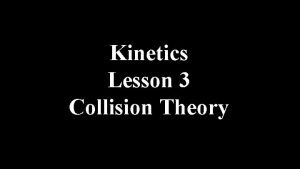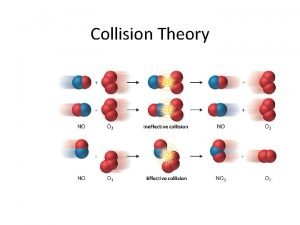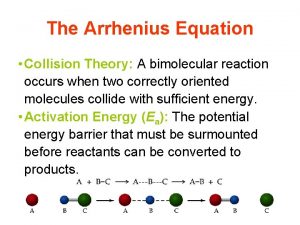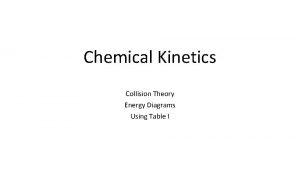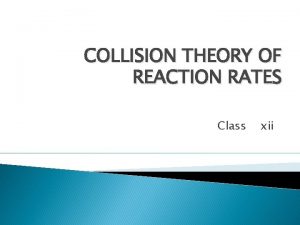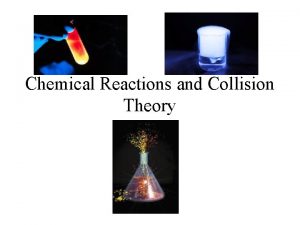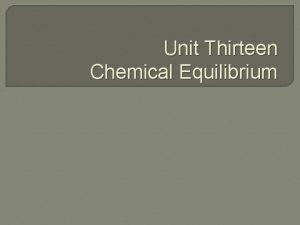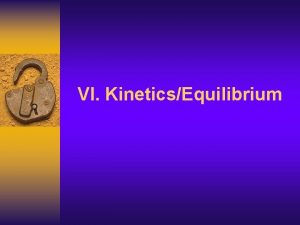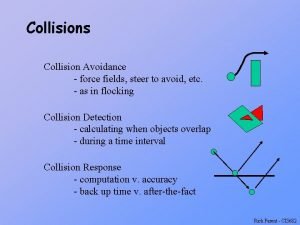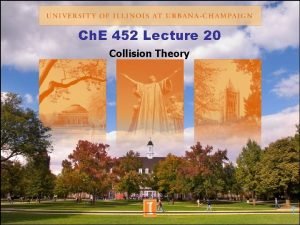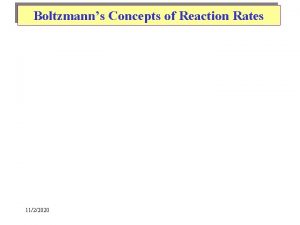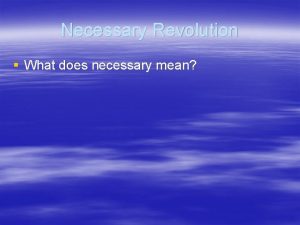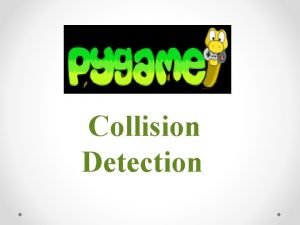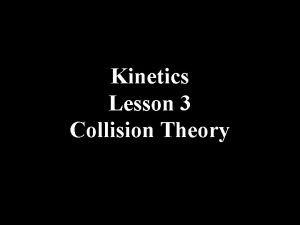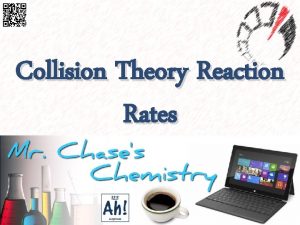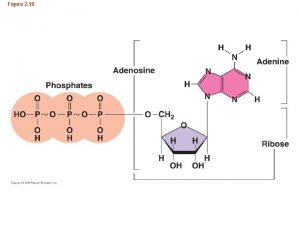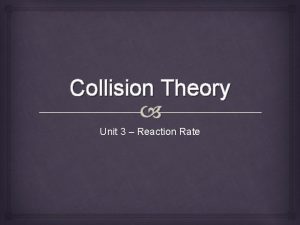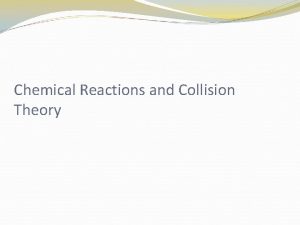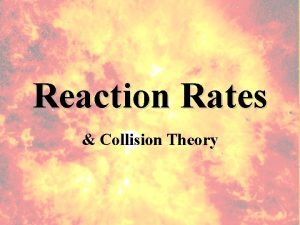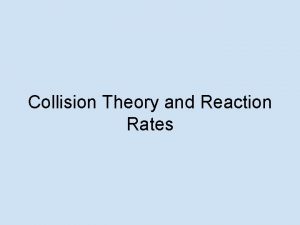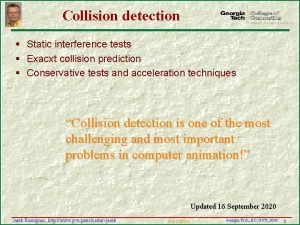Collision Theory Collision Theory What is necessary for

















- Slides: 17

Collision Theory

Collision Theory • What is necessary for a chemical reaction to occur? • Collision theory – theory that a reaction occurs when an effective collision occurs between reactants (atoms, molecules or ions) • What makes a collision effective?

Effective Collisions 1. the orientation of the reactants (the collision geometry) must be favourable 2. the collision must occur with sufficient energy

Orientation

Energy • Activation energy (Ea) – the minimum collision energy required for the reaction to take place • This energy is needed first to break the bonds in the reactants and then to form new bonds in the products

Energy Diagram • energy diagrams show change in energy during a reaction Ea ΔH

Activated Complex • activated complex – a chemical species temporarily formed by the colliding reactant molecules before the final product of the reaction is formed

Activated Complex • transition state – the highest energy state between reactants and products during which bonds are being broken and formed.

Ea • How will activation energy affect the rate of a reaction? • The higher the activation energy the fewer the effective collisions and the slower the reaction

Exothermic and Endothermic Reactions ΔH ΔH • Enthalpy ( H) – measure of heat absorbed or released • H = Hproducts - Hreactants • Exothermic – energy of products is less than reactants ( H negative) • Endothermic – energy of products is greater than reactants ( H positive)

Factors Affecting Reaction Rate 1. 2. 3. 4. 5. Nature of reactants Temperature Concentration Surface Area Catalysts

Nature of Reactants • e. g. Bond strength • e. g. state, gases have more collisions

Temperature • higher temperature more kinetic energy more collisions

Concentration • more particles more collisions

Surface Area • more exposure to collisions, faster reaction – lump reacts more slowly

Catalysts • Catalyst – substance that increases the rate of a reaction without being consumed • It works by lowering activation energy

Inhibitor • inhibitor – slows a reaction
 Collision theory of kinetics
Collision theory of kinetics Which is/are necessary for successful collisions to occur
Which is/are necessary for successful collisions to occur Arrhenius equation
Arrhenius equation States that atoms ions and molecules must collide to react
States that atoms ions and molecules must collide to react Collision theory diagrams
Collision theory diagrams Collision theory class 12
Collision theory class 12 Collision theory
Collision theory Chemistry collision theory
Chemistry collision theory Collision theory states that
Collision theory states that Collision theory
Collision theory Collision theory
Collision theory Collision theory
Collision theory Fspos
Fspos Novell typiska drag
Novell typiska drag Tack för att ni lyssnade bild
Tack för att ni lyssnade bild Vad står k.r.å.k.a.n för
Vad står k.r.å.k.a.n för Varför kallas perioden 1918-1939 för mellankrigstiden
Varför kallas perioden 1918-1939 för mellankrigstiden En lathund för arbete med kontinuitetshantering
En lathund för arbete med kontinuitetshantering
